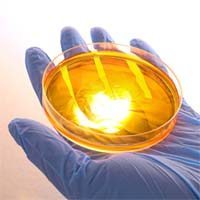New Tools Help Pathologists Make Mesothelioma Diagnosis

Pathologists may be able to do a better job of diagnosing mesothelioma in the lab, thanks to a new set of tools released by the International Mesothelioma Interest Group.
A rare malignancy, mesothelioma typically carries a poor prognosis. Part of the reason may be the difficulty of making an accurate diagnosis. Even with sophisticated testing capabilities, including immunohistochemical staining and electron microscopy, it can be difficult to distinguish mesothelioma from other types of cancer.
Now, pathologists who work with the International Mesothelioma Interest Group have come up with a list of guidelines they hope will help streamline the process in laboratories around the world. Drawing on their own experiences, as well as studies in peer-reviewed publications and text books, the group came up with a list of guidelines that include methods for distinguishing between benign and malignant mesothelioma lesions, key histologic features of pleural and peritoneal mesothelioma, use of immunohistochemical staining, differentiating this cancer from other types of cancer, distinguishing characteristics of sarcomatoid mesothelioma, and the use of molecular ‘marker’ chemicals in making a diagnosis. The guide also includes a list of caveats and pitfalls in making a diagnosis of mesothelioma.
The report makes special note of the importance of immunohistochemical markers in mesothelioma diagnosis. Immunohistochemical markers are cellular compounds that can help doctors determine in what organ a cancer originated. Because different labs may use different groups of antibodies for this, the report recommends that pathologists ensure the accuracy of their results by using panels that contain both positive and negative markers.
Further, the guidelines suggest using immunohistochemical panels that have either sensitivity or specificity greater than 80% for the lesions in question. A positive mesothelioma diagnosis should take into account the type of test being used and the percentage of cells staining positive for the disease. The International Mesothelioma Interest Group is an independent group of scientists and clinicians working to understand, cure and prevent mesothelioma. The new guidelines are meant to be used as a reference for pathologists.
Sources:





